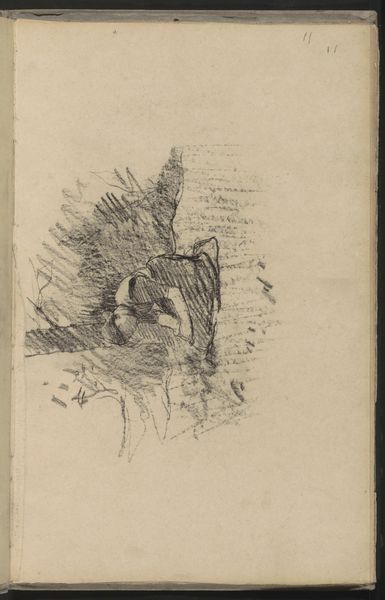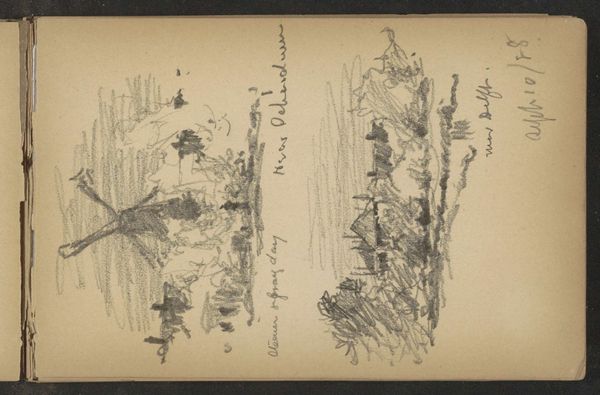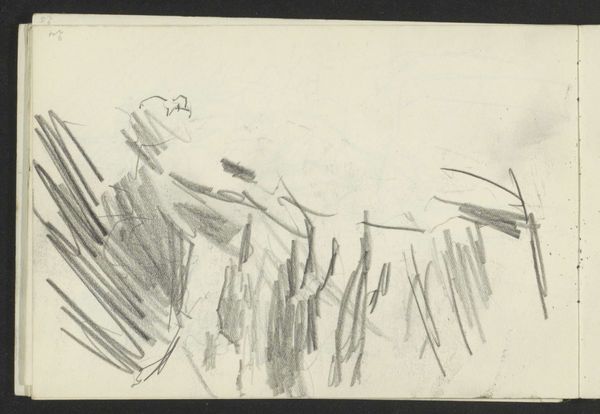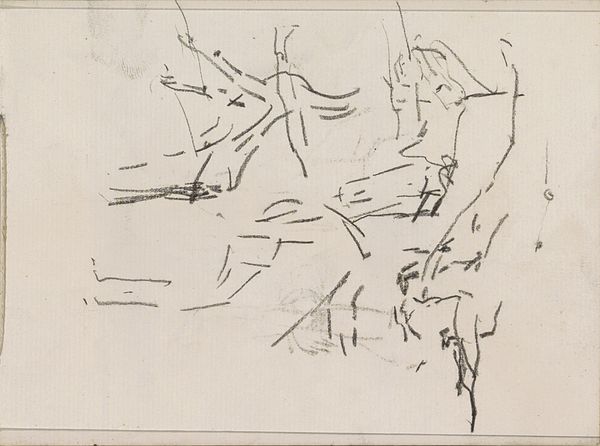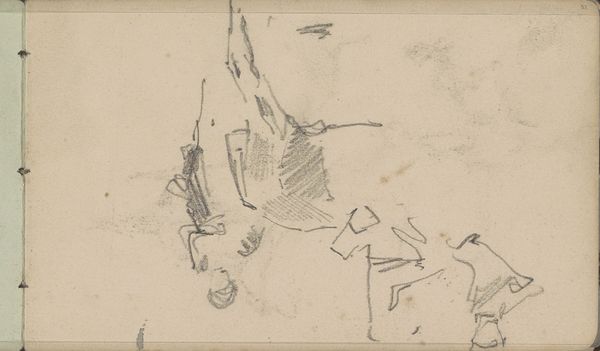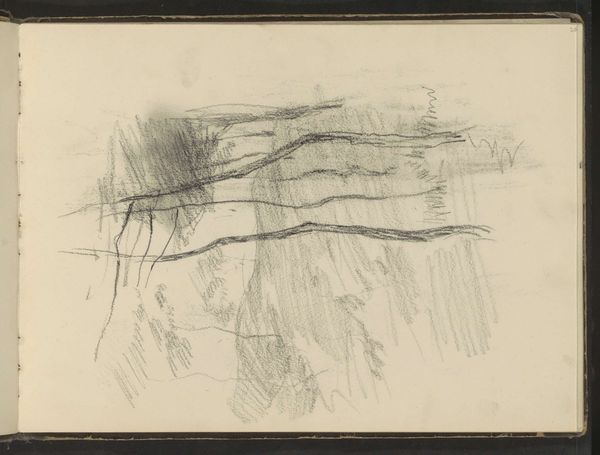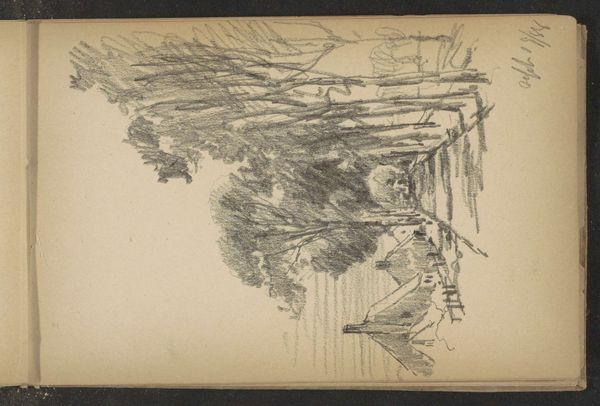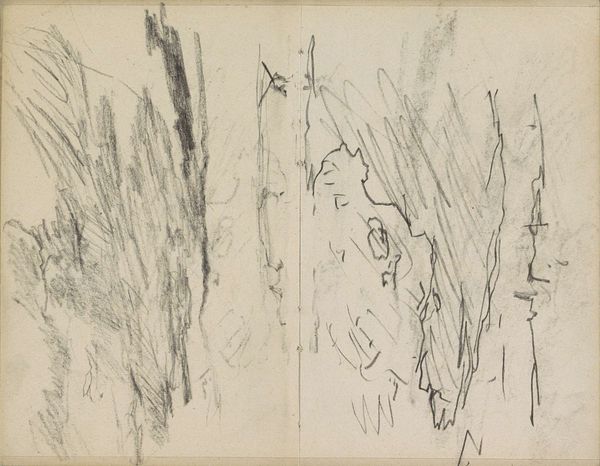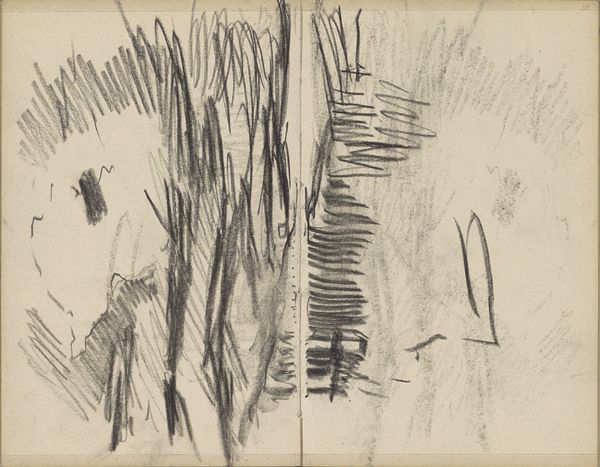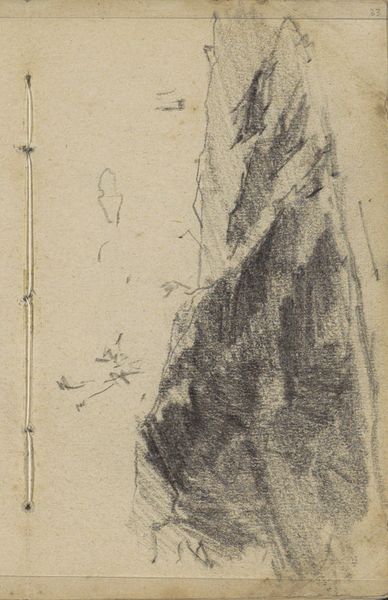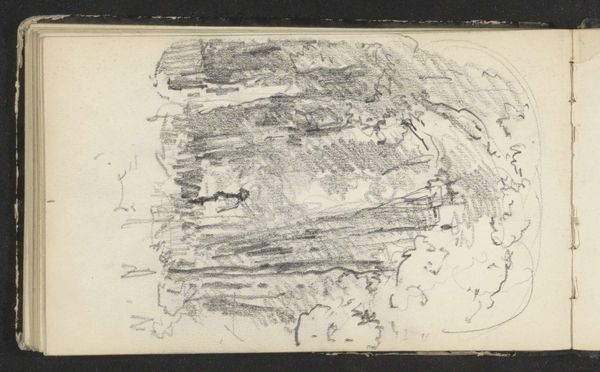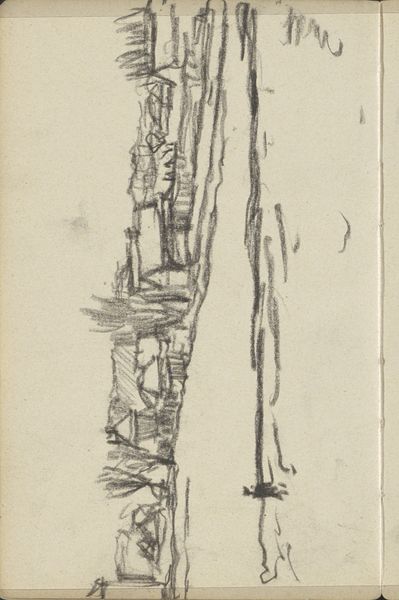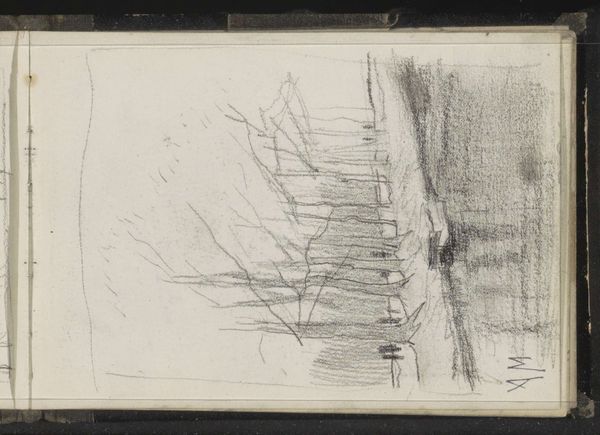
drawing, pencil, graphite
#
drawing
#
ink drawing
#
pen sketch
#
landscape
#
pencil
#
graphite
#
realism
Copyright: Rijks Museum: Open Domain
Editor: Here we have Alexander Shilling's "Boerderijen in een landschap", or "Farms in a Landscape", made between 1888 and 1889, using graphite, pencil and ink. It has a very unfinished, raw feel to it, almost like we're catching a glimpse into the artist's sketchbook. What do you see in this piece that speaks to its historical context? Curator: Well, sketches like this offer us a fascinating glimpse into the artistic process itself, which was gaining prominence as art academies expanded and informal artistic communities flourished. The quick, almost shorthand nature of the drawing suggests a focus on capturing immediate impressions of rural life. Do you notice how the buildings aren't romanticized? Editor: I do. They seem almost blocky and functional. Was there a movement away from idealized portrayals of the countryside at the time? Curator: Exactly! There was a growing interest in portraying rural life more realistically, devoid of excessive sentimentality. The burgeoning art market played a role too, demanding scenes of everyday life that resonated with a wider, often middle-class, audience. It reflects the wider social trend of valuing authenticity. Consider Courbet's work a few decades prior. What do you think an urban dweller viewing this in a gallery might feel? Editor: I guess a kind of longing for the simpler life, but also maybe a confrontation with the realities of rural labor? Curator: Precisely. Art was becoming a space where these societal tensions could be explored and even marketed. This little sketch isn’t just a landscape; it's a document of a changing society, caught in pencil and ink. Editor: It's amazing how much history is packed into such a simple sketch. I never would have thought of it that way. Thanks for shedding light on this piece.
Comments
No comments
Be the first to comment and join the conversation on the ultimate creative platform.
